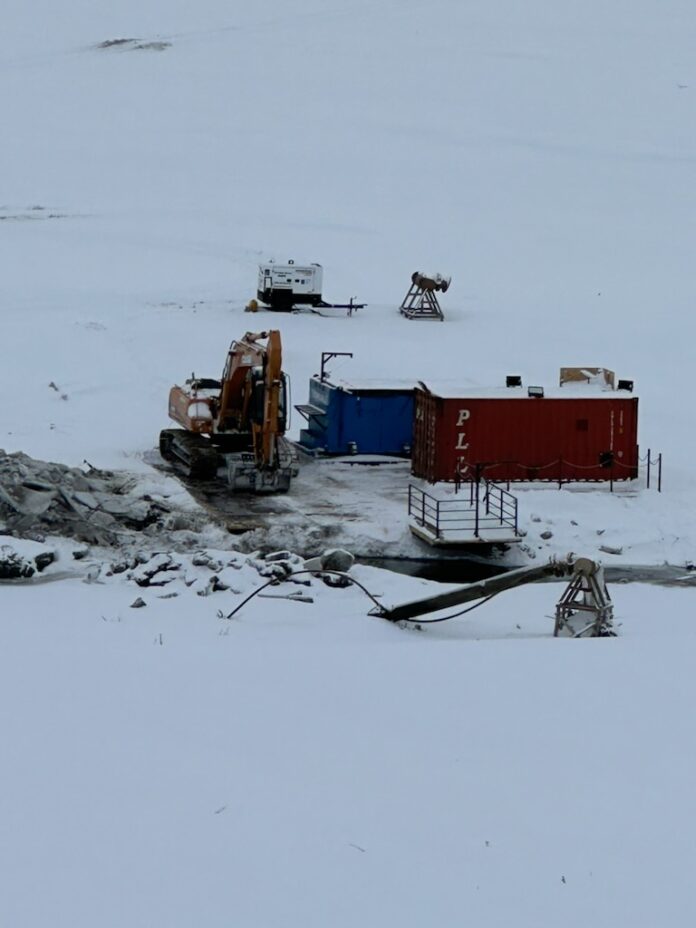Based on current snowpack levels, it’s not looking good for southern Alberta reservoirs to fill up this summer and spring, according to the Municipal District of Pincher Creek.
M.D. Utilities and Infrastructure Manager David Desabrais says the municipality started hauling water around August 2023, when existing intakes typically under the Oldman Reservoir surfaced, just north of Cowley. “The water level went down enough in the Oldman Reservoir. They were now above water. We started to haul water from downstream of the dam – raw water and potable water from the Town of Pincher Creek to our water treatment plant, also located north of Cowley.”
Since mid-December, a temporary pumping station has been installed at the location of the M.D.’s water intake valves on the Crowsnest River, “because we are on that west fork of the Oldman Reservoir. It’s now basically just the Crowsnest River that’s flowing by there. It is flowing and it’s not dry.”
Desabrais explains the M.D. is pumping from the reservoir into an existing intake and pumping it up to its plant. “That’s been our primary water source.”
According to Desabrais, the water is being utilized by the M.D., Cowley, Lundbreck, Beaver Mines, Castle Mountain Resort, Castle Provincial Park and a few rural users along the line. Currently, the Town of Pincher Creek isn’t utilizing water from the M.D.
Stephen Burnell, the Town of Pincher Creek’s director of Operations and Infrastructure says the Town draws water from both Pincher Creek and Castle River, “which are tributaries of the Oldman River.”
Aside from the temporary pump station, the M.D. is putting a lot of resources into figuring out what to do long-term. “The current solution is costing us a ton of money and is not sustainable for long-term drought situations for sure,” says Desabrais.
There’s a significant amount of regulatory approval required to do any work related to water, Desabrais notes. “We just started some regulatory submissions for essentially building a secondary intake near our existing intakes, which would be subsurface and hydraulically connected to the Crowsnest River – but a little bit more resilient to drought conditions.”
A few other long-term ideas are also being discussed, depending on how things turn out this spring and summer. “The M.D. has been taking this very seriously since we lost our intakes in August,” says Desabrais. “Us being upstream from all the reservoirs, we see it first. We’ve been affected to a pretty extreme degree.”
“The overall South Saskatchewan River Basin – all the users are going to need to play their part this spring and summer. I hope we can all work together and keep the water flowing safely.”




